View in other NatureServe Network Field Guides
NatureServe
Montana
Utah
Wyoming
Idaho
Wisconsin
British Columbia
South Carolina
Yukon
California
New York
Glover's Silkmoth - Hyalophora gloveri
General Description
The wings of the Glover's Silkmoth (Hyalophora gloveri) are dark brown to red-brown. The gray area outside the white postmedian band does not contain any red. The crescent spots on the forewings and hindwings are white, although occasionally the spots on the forewing may be reduced or absent. The wing span is about 80 - 100 mm (Opler et al. 2010).
Phenology
Glover's Silkmoth females lay one or two eggs at the base of larch needles, or on leaves and twigs of other host plants. The larvae hatch in less than two weeks and are solitary feeders. The cocoon is compact and spun close to the ground on the trunk or stem of the host plant or on nearby thick undergrowth. There is one flight from May-July (Opler et al. 2010).
Species Range
Montana Range
Range Descriptions
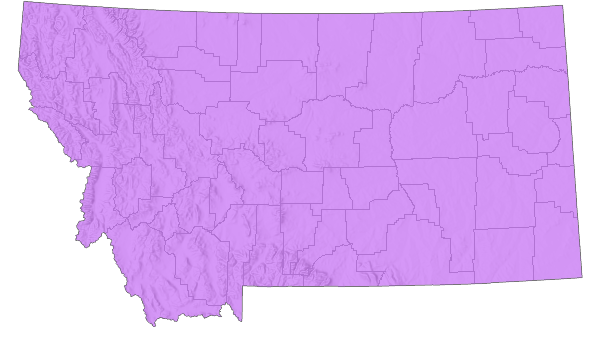
 Native
Native
Range Comments
The Glover's Silkmoth ranges from Alberta and Montana south through the Rocky Mountain region to southwest Texas and into central Mexico (Opler et al. 2010).
Observations in Montana Natural Heritage Program Database
Number of Observations: 59
(Click on the following maps and charts to see full sized version)
Map Help and Descriptions
Relative Density
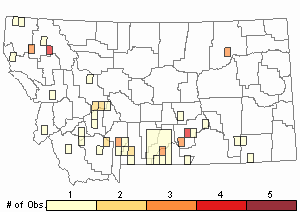
Recency
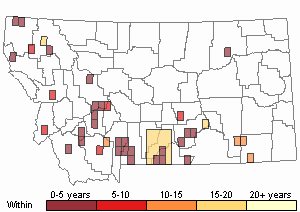

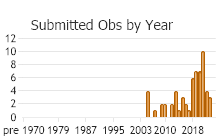
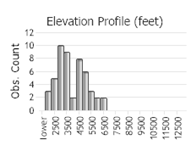 (Observations spanning multiple months or years are excluded from time charts)
(Observations spanning multiple months or years are excluded from time charts)
Habitat
Woodland with poorly drained, boggy, acid soil; suburban gardens; and a wide variety of wooded habitats (Opler et al. 2010).
Food Habits
In the east, Columbia Silkmoth (Hyalophora columbia) larvae feed on tamarack (
Larix laricina). Also in the east, larvae in western Ontario eat pin cherry (
Prunus pensylvanica), speckled alder (
Alnus rugosa), and white birch (
Betula papyrifera). In the west the larvae feed on western chokecherry (
Prunus demissa), bitter cherry (
P. emarginata), bitterbrush (
Purshia tridentata), wild roses (
Rosa sp.), willows (
Salix), buffalo berry (
Shepherdia argentea), Russian olive (
Eleagnus angustifolius), and buckbrush (
Ceanothus). Adults do not feed (Opler et al. 2010).
References
- Literature Cited AboveLegend:
 View Online Publication
View Online Publication Opler, P.A., K. Lotts, and T. Naberhaus, coordinators. 2010. Butterflies and moths of North America. Big Sky Institute, Bozeman, MT. Available at: www.butterfliesandmoths.org (Accessed 15 June 2015).
Opler, P.A., K. Lotts, and T. Naberhaus, coordinators. 2010. Butterflies and moths of North America. Big Sky Institute, Bozeman, MT. Available at: www.butterfliesandmoths.org (Accessed 15 June 2015).
- Web Search Engines for Articles on "Glover's Silkmoth"
- Additional Sources of Information Related to "Insects"





